At a yellowpainted drugstore at the corner of Canal, he stopped and stared abstractedly at a face on a green advertising card.
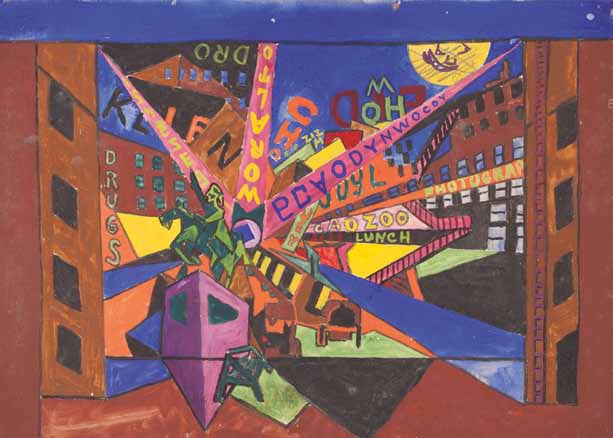 John Dos Passos, Union Square, Gouache, 1925–28
John Dos Passos, Union Square, Gouache, 1925–28
Dos Passos often gives the character artistic points of view. Here, the character notices color and stares "abstractedly". In the painting above, abstract city elements of typography, signs, lights, buildings, and machines, appear from a window view.
Annotation Sources: Pizer, Donald, et al. The Paintings and Drawings of John Dos Passos: A Collection and Study. Liverpool University Press, 2016. JSTOR, http://www.jstor.org/stable/j.ctt1ps32nh. Accessed 6 Nov. 2022.
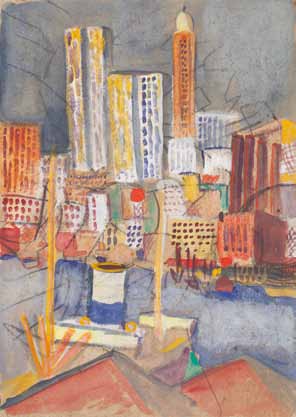 John Dos Passos, Manhattan Skyline from Brooklyn
Watercolor, 1920–24
John Dos Passos, Manhattan Skyline from Brooklyn
Watercolor, 1920–24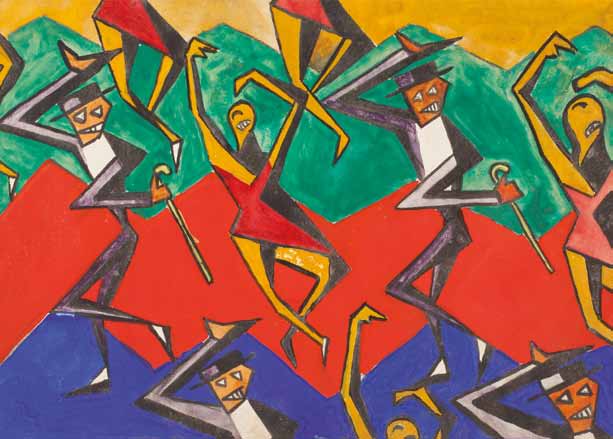 John Dos Passos, Jazz Funeral, Watercolor, 1925–28
John Dos Passos, Jazz Funeral, Watercolor, 1925–28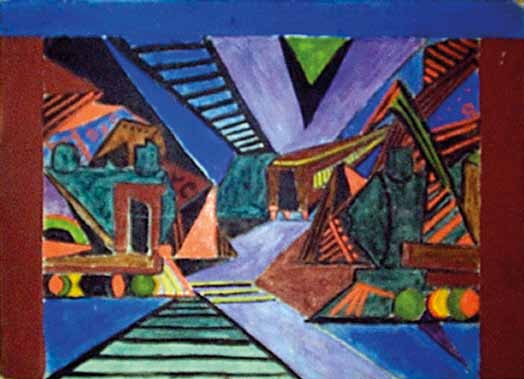 John Dos Passos, Smash-up, Gouache, 1925–28
John Dos Passos, Smash-up, Gouache, 1925–28 John Dos Passos, Factory, Goauche, 1925–28
John Dos Passos, Factory, Goauche, 1925–28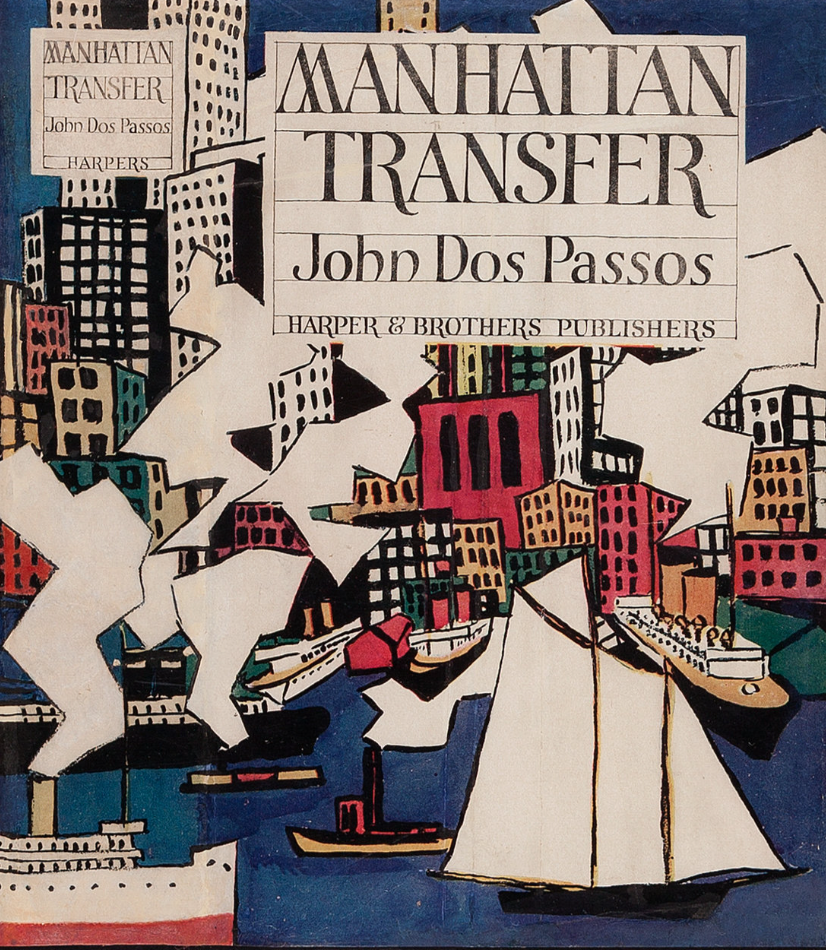 John Dos Passos, Book cover design for Manhattan Transfer, Harper & Brothers, 1925
John Dos Passos, Book cover design for Manhattan Transfer, Harper & Brothers, 1925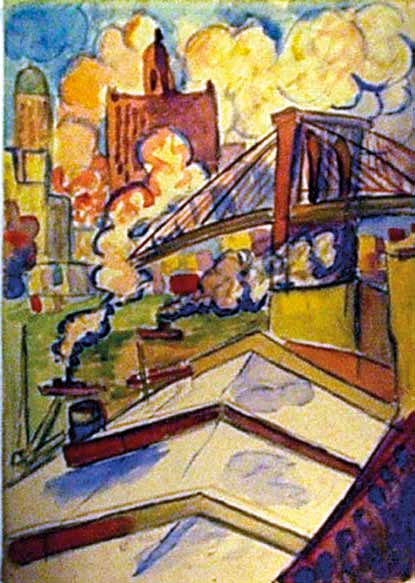 John Dos Passos, Working Boat Approaching Manhattan, Watercolor, 1920–24
John Dos Passos, Working Boat Approaching Manhattan, Watercolor, 1920–24 John Dos Passos, “The Blacksmith”, Watercolor, undated
John Dos Passos, “The Blacksmith”, Watercolor, undated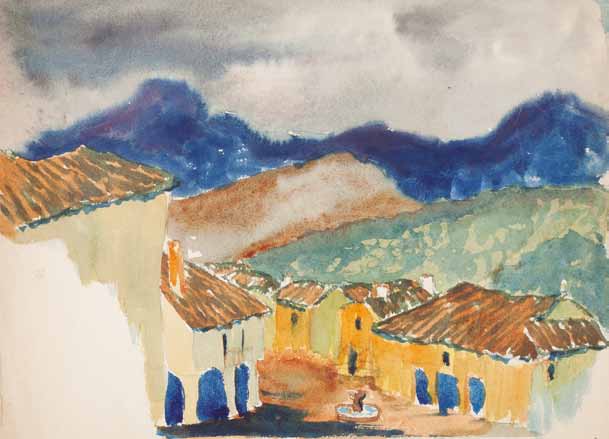 John Dos Passos, Village and Countryside, Watercolor, undated
John Dos Passos, Village and Countryside, Watercolor, undated John Dos Passos, New York City Street Scene, Watercolor, 1920–24
John Dos Passos, New York City Street Scene, Watercolor, 1920–24